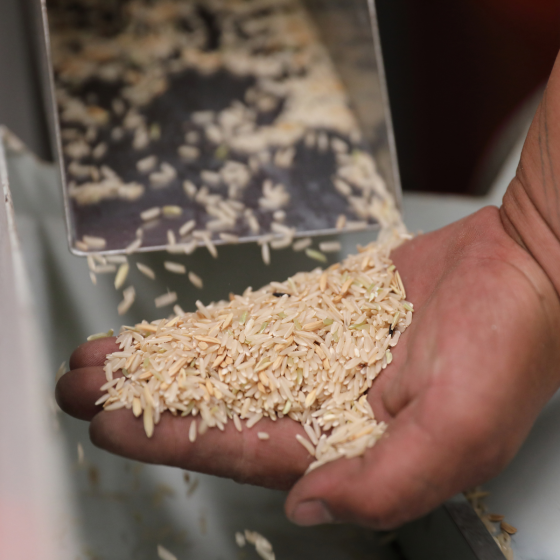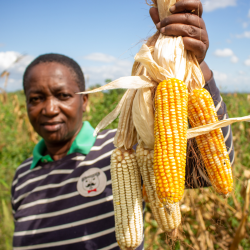With the advent of technology, life has dramatically transformed for the better. Tasks that once required immense effort have become far easier and more efficient. This evolution is evident across sectors, but especially in agriculture, where technology has revolutionized the way we farm, process, and distribute food.
In modern farming, a task that previously took ten people three days, like tilling a hectare of land, can now be completed in an hour using a mechanized plough. Technological innovations span every stage of agriculture: pre-production, production, and post-production. These include machinery (for tilling, planting, and harvesting), improved seed varieties, fertilizers, pesticides, and even digital platforms for marketing and financial services.
This article goes beyond highlighting the benefits of agricultural technology. It critically examines the challenges Nigerian farmers, especially smallholders, face in adopting modern technologies, and explores the opportunities available to overcome these barriers and enhance agribusiness productivity.
The Evolution and Importance of Agricultural Technology
Agricultural innovation dates back to prehistoric times, when early humans fashioned farming tools from sticks and stones. While crude, these tools were revolutionary for their time. Since then, continuous improvements have shaped modern agriculture into what it is today.
The benefits of agricultural technology can be categorized into three key areas:
- Reduced Labor
One of the most transformative impacts of technology in agriculture is the reduction of manual labour. Gone are the days of relying solely on hoes, cutlasses, and long hours under the sun. Machines like planters, harvesters, and irrigation systems now handle the heavy lifting. This not only saves time and energy but also allows farmers to focus on improving other areas of their operations.
- Increased Yield
Technology enables smarter farming decisions. From improved seed varieties to weather forecasting apps and precision planting tools, farmers can optimize productivity. In a country like Nigeria, where food insecurity is a persistent challenge, boosting yield is not only a personal gain for farmers—it’s a national necessity.
- Enhanced Efficiency
Modern technology increases efficiency by ensuring optimal use of inputs like water, fertilizer, and land. With tools like automated spreaders, digital farm management platforms, and remote monitoring, farmers can reduce waste and increase returns. Efficiency means doing more with less—less land, less effort, and less uncertainty, but greater output.
Technology Adoption Spectrum
Farmers tend to fall into three broad categories when it comes to adopting technology:
-
Early Adopters: These are the pioneers who eagerly embrace new tools and practices. They are open to innovation and often lead the way for others.
-
Late Adopters: This group waits to see proof of success before committing. They are influenced by peers, cooperatives, or proven case studies.
-
Non-Adopters: Resistant to change, these farmers prefer traditional methods and are often skeptical of new technologies.
It’s important to note that these categories are influenced not only by mindset but also by external constraints, which we will now explore.
Challenges to Agricultural Technology Adoption in Nigeria
Despite the clear benefits, widespread adoption of agricultural technology in Nigeria faces several significant hurdles:
- Financial Constraints
Many agricultural technologies are expensive, often costing more than double a smallholder’s typical farm budget. While large-scale farmers or agribusinesses may adopt these tools with ease, medium and smallholder farmers struggle to afford them. This financial gap leads to late adoption—or non-adoption—especially in rural areas.
- Lack of Awareness and Training
A significant number of farmers are unaware of available technologies or lack the skills to use them. This is especially true in remote areas where information dissemination is slow. Many smallholder farmers also have low literacy levels, making it even more critical to provide hands-on training. Unfortunately, such opportunities are often limited or non-existent.
- Infrastructure Deficits
Successful adoption of many technologies depends on reliable infrastructure—roads, electricity, water supply, and internet connectivity. In many rural and semi-urban communities, these are lacking. Without them, even the best innovations become inaccessible or ineffective.
- Weak Extension Services
Agricultural extension agents play a critical role in training farmers and disseminating new information. However, Nigeria faces a shortage of well-trained, adequately supported extension personnel. This shortfall significantly hampers technology diffusion and adoption at scale.
- Land Tenure Systems
Nigeria’s land ownership structure—dominated by communal and leasehold systems—poses another challenge. Some technologies, such as irrigation systems, require structural changes to land. Without clear or secure land tenure, farmers are reluctant to make long-term investments.
- Cultural Barriers
Deeply rooted cultural beliefs can also hinder technology adoption. In some regions, introducing hybrid seeds or allowing women to participate in certain agricultural activities clashes with traditional norms. These socio-cultural dynamics must be understood and addressed to ensure inclusive adoption.
Opportunities for Growth and Transformation
Despite these barriers, Nigeria’s agricultural sector holds immense potential. Several opportunities exist to drive greater technology adoption:
- Government and Policy Support
The Nigerian government can play a pivotal role by offering subsidies, grants, and incentives to make technology more accessible. Policy reforms that encourage innovation, entrepreneurship, and training programs will further enable adoption. Organizing awareness campaigns and workshops is also key to changing perceptions and building capacity.
- AgriTech Startups
Startups are emerging as crucial bridges, connecting farmers to markets, financial services, and tailored tech solutions. With the right support, these ventures can design affordable, accessible technologies that cater to the needs of smallholder farmers, helping to close the technology gap.
- Youth Engagement
Young Nigerians, especially tech-savvy youth, must be encouraged to enter agriculture. Changing the narrative around farming—from being a “poor man’s job” to a modern, profitable career—is essential. When youth lead with innovation, they become powerful catalysts for transformation.
- Public-Private Partnerships (PPPs)
Collaboration is key. By fostering partnerships among governments, NGOs, research institutions, and the private sector, Nigeria can accelerate access to tools, training, and infrastructure. These synergies are crucial for driving inclusive, long-term change in the agricultural landscape.
Conclusion
Agricultural technology holds the key to unlocking a more efficient, productive, and resilient food system in Nigeria. While challenges remain—ranging from financial and infrastructural constraints to socio-cultural resistance—the opportunities are vast and growing.
A multi-stakeholder approach involving farmers, governments, the private sector, and youth is essential. By addressing existing barriers and embracing innovation, Nigeria can move toward a future where technology empowers farmers, strengthens food systems, and fuels national development.






